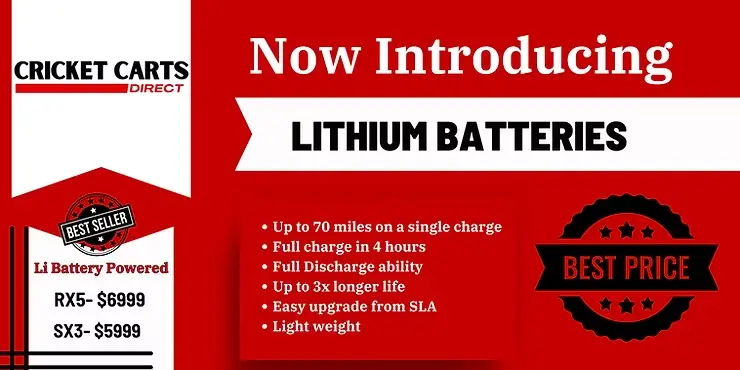Lithium batteries have revolutionized the golf cart industry, offering superior performance and longevity compared to traditional SLA batteries. However, proper maintenance is key to ensuring optimal performance and extending the lifespan of your lithium golf cart battery. In this comprehensive guide, we’ll cover the basics of lithium golf cart battery maintenance to help you get the most out of your investment.
1. Regular Charging: Unlike lead-acid batteries, lithium batteries don’t require a full discharge before recharging. In fact, it’s best to avoid deep discharges whenever possible to prolong battery life. Make it a habit to recharge your lithium golf cart battery after each use, or at least every few days if it’s not in regular use. Additionally, avoid storing the battery in a fully discharged state for an extended period, as this can lead to irreversible damage.
2. Proper Storage: When not in use, store your lithium golf cart battery in a cool, dry place away from direct sunlight and extreme temperatures. Ideally, the storage temperature should be between 50°F and 77°F (10°C and 25°C) to maximize battery lifespan. Before storing the battery for an extended period, ensure it’s at least 50% charged to prevent self-discharge and potential damage from over-discharge.
3. Avoid Overcharging: While lithium batteries are generally safe from overcharging due to built-in protection circuits, it’s still important to use a compatible charger and follow manufacturer guidelines. Overcharging can cause excess heat buildup, which can degrade battery performance and shorten its lifespan. Invest in a quality charger specifically designed for lithium golf cart batteries to ensure safe and efficient charging.
4. Periodic Inspection: Regularly inspect your lithium golf cart battery for any signs of damage, leaks, or corrosion. Check the battery terminals for tightness and cleanliness, ensuring there’s no buildup of dirt or debris that could affect connectivity. If you notice any abnormalities or issues, such as swelling, unusual odors, or decreased performance, consult a professional for further evaluation and potential replacement.
5. Follow Manufacturer Recommendations: Lastly, always refer to the manufacturer’s guidelines and recommendations for proper maintenance and usage of your lithium golf cart battery. Each battery model may have specific requirements and considerations, so it’s essential to adhere to these instructions to ensure optimal performance and safety.
By following these basic maintenance tips, you can maximize the performance, lifespan, and reliability of your lithium golf cart battery. Remember, proper care and attention are essential for getting the most out of your investment and enjoying countless rounds on the green with your golf cart.




